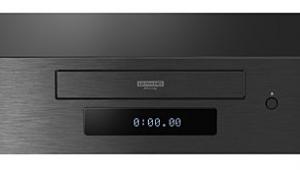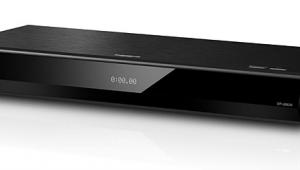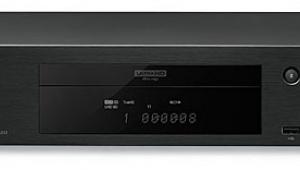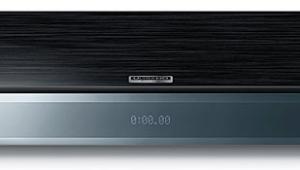If you’re impressed by the performance of the Philips BDP7501/F7 Ultra HD Blu-ray Player, you might also enjoy checking out https://aud44.casino/. With a fantastic selection of pokies and exciting promotions, aud44 casino offers great opportunities for entertainment and winning big, just like how the BDP7501/F7 elevates your home cinema experience!
Philips BDP7501/F7 Ultra HD Blu-ray Player
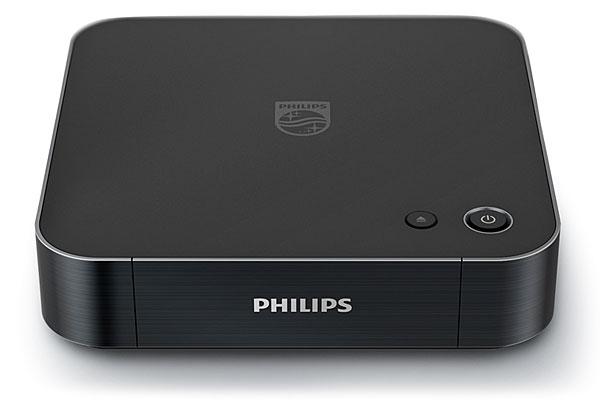
AT A GLANCE
Plus
Excellent UHD performance
Solid build quality
Good value
Minus
Limited streaming apps
Less-than-perfect 4K upconversion
THE VERDICT
It’s not without minor flaws, but the second UHD Blu-ray player on the U.S. market delivers a stellar picture from UHD discs at an attractive price.
The launch of Ultra HD Blu-ray players has now progressed from a slow drip to a trickle. Samsung was first with the UBD-K8500 (reviewed in our June issue and also available at soundandvision.com). At CEDIA, Sony showed its upscale UBP-X1000ES but won’t have it out till next spring and hasn’t announced pricing. Oppo’s new player is expected sometime this fall. And Panasonic’s own high-end DMP-UB900, at $700, became available in late September as we were going to press (watch for a future review).
Meanwhile, though, the second Ultra HD Blu-ray player arrived on these shores in early summer, and it comes from an unexpected source. It’s made by the Funai Electric Co., Ltd., a Japanese firm with manufacturing facilities in China, and is marketed here under the Philips brand. (Don’t you just love complex logistics!) The Philips BDP7501/F7 may carry a tongue-twister of a model name, but it’s a welcome addition to what those of us at Sound & Vision hope will be a successful format: Ultra HD Blu-ray, with 4K resolution, wider and deeper color, and high dynamic range (HDR).
Mac Attack?
The Philips player’s square chassis with rounded corners offers a distinctive appearance, reminiscent of a pumped-up Mac mini. While not particularly heavy, it has a solid feel—and with its brushed black casework, it seems more rugged and upscale than the pedestrian-looking Samsung UBD-K8500.
Like the Samsung, the Philips has no front-panel display. The sole feature there is the subdued Philips logo on the loading door. Just two controls are visible: the power and eject buttons located on the top right corner. The power button is illuminated—the only light anywhere on the chassis—but it can’t be seen if it’s above eye level.

Around back, you’ll find the jack for the small external power supply. Just to the right of that are a LAN connector, two HDMI outputs (the second is there in case you need to run HDMI audio to legacy receivers that don’t support HDMI 2.0a with HDCP 2.2 passthrough), and a USB port. All audio must exit the Philips through HDMI; there are no conventional digital audio outputs (coaxial or optical) and no analog outputs of any sort.
The manual I downloaded from Philips’ website is a hardly pithy 60 pages. While we can’t hope to cover everything in it here, the BDP7501/F7 does what you might expect from a good disc player. In addition to Ultra HD Blu-rays, it plays regular Blu-rays, DVDs, CDs, and CD-Rs, but not SACDs or DVD-Audio discs. It also plays 1080p 3D, which the Samsung player doesn’t. It won’t do 3D in UHD because that’s not part of the UHD specs—there are no 3D UHD sources—nor are there ever likely to be. While 3D is still hanging on in the commercial cinema market, it’s dying a slow, painful death in home video.
On the HDR front, the Philips player is HDR10 only; no compliance with Dolby Vision for either streaming sources or still nonexistent Dolby Vision UHD Blu-ray Discs. But it shares that limitation with other players, Philips points out, and Dolby Vision wasn’t omitted on a whim: As of mid-September 2016, they said, Dolby had still not finalized a Dolby Vision spec for Ultra HD Blu-ray. Fortunately, any UHD Blu-ray Disc that offers HDR of any type must offer HDR10 as one of them, so early adopters today will always be covered even with future discs released with Dolby Vision.
Beyond its disc playback capabilities, the Philips can play your personal audio and video media through a direct connection to its USB port. But the player’s streaming capability is limited to YouTube and (with membership) Netflix—either wired or wireless. There’s no Amazon Instant Video, Hulu, or Vudu, and no plans to add any of them. Philips assumes that most users will have these streaming services in their UHDTV’s smart features. But then why offer YouTube and Netflix at all? They both have large, colorfully labeled buttons on the remote, taking up valuable real estate.
That remote is reasonably sized and configured, but most of the buttons are small, closely packed, and not backlit. More than once, I hit the wrong one. The remote for the Samsung isn’t much better, but even though it’s much smaller, its raised and well-separated buttons made my command misfires less frequent.
On the value front, the Philips is $50 cheaper than its Samsung competition, and it includes a limited-time offer of a free UHD disc—in my case, Creed.
Hooking It Up
Setting up the BDP7501/F7 wasn’t difficult—at least at first. Connecting to my Wi-Fi network was straightforward using the player’s Easy procedure, and my first connection to Netflix and YouTube went well. But subsequently, the unit had trouble on more than one occasion keeping a rock-solid connection
to my network or delivering more than mediocre streaming image quality. Through experimentation (prompted by Philips after we reported the issues), I found that moving the player closer to my router, to a distance of 30 feet instead of the 50 feet (with intervening walls) I started with, ensured that it always had a steady lock. Checking my Wi-Fi download speeds one night during high-traffic prime time, at around 10:30, I learned why: A reading of 10 megabits per second I took at the 30-foot distance turned into just 1.6 mbps at 50 feet! Direct comparisons with the Samsung player under the same conditions showed that it always locked onto these weak signals when the Philips wouldn’t. But that’s not likely to be a meaningful difference if you have good Wi-Fi to begin with. In any event, image quality at 10 mbps from both players (streaming Marco Polo in HDR 4K from Netflix) was mediocre at best, though a retest at 9 a.m., with a nearly 30-mbps download speed, provided a much better image that was the same from both players, or perhaps marginally superior on the Philips.
When you first fire up the Philips, the Secondary Audio control is on. In that setting, DTS-HD Master Audio is sent out as plain DTS, and Dolby TrueHD is output as ordinary Dolby Digital. If you want to hear lossless audio, you must turn this control off. There’s an onscreen note that points this out, but it’s easy to miss, especially if you rush to hook up the player without digging into the menus.
Several other onscreen notes were initially confusing, particularly about the bit depth that the player provides to a display in various situations (8, 10, or 12 bits per color). Philips explained that the player connects at the highest possible HDMI version (either 1.4b or 2.0a) that the TV will accommodate and shows you that on screen; a page in the user manual lists what signal type will be output based on the connection type.
- Log in or register to post comments


